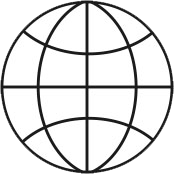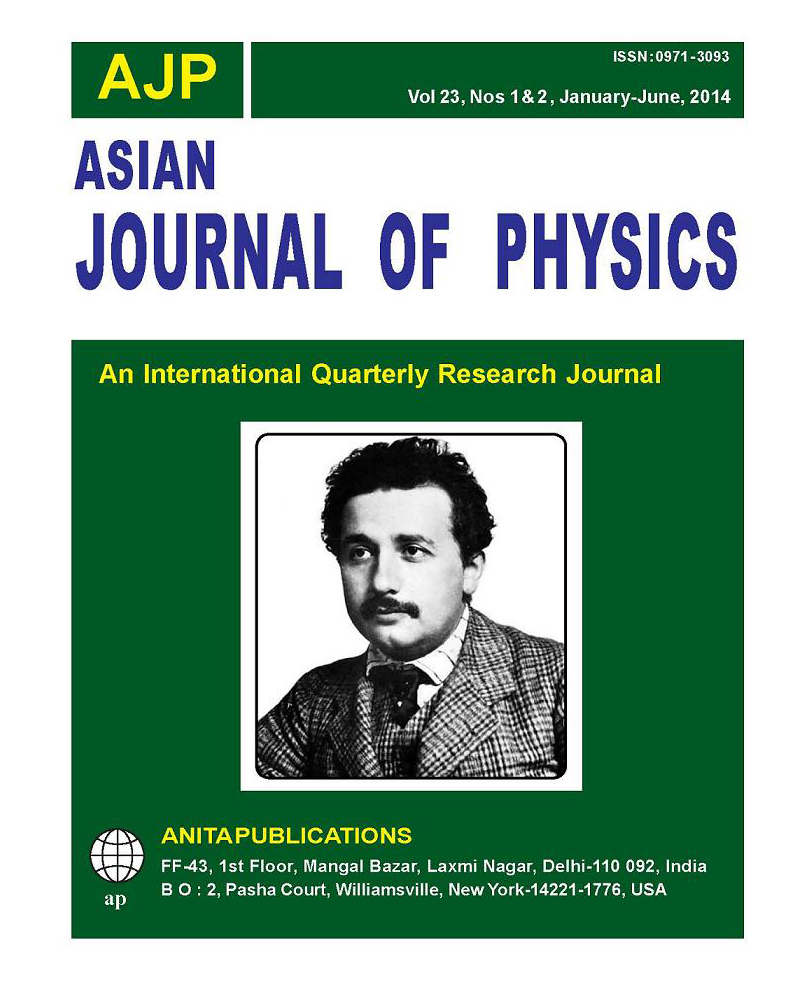
ap

ap
An International Peer Reviewed Research Journal

AJP
SSN : 0971 - 3093
Vol 23, No. 1 & 2, January - June, 2014
Asian Journal of
Physics
Vol. 23, No. 1 & 2 (2014)
189-208
Japanese studies of asteroids after the discovery of Hirayama families
Tsuko Nakamura
Teikyo-Heisei University, Information Sciences Nakano 4-21-2, Nakano-ku, Tokyo 164-8530, Japan
____________________________________________________________________________________________________________________________________
This paper reviews studies relating to asteroids conducted by Japanese researchers after the discovery of asteroid families by Kiyotsugu Hirayama in 1918. But the concept and importance of asteroid families were not immediately recognized by the international astronomical community. Thereafter, eminent researches on asteroid dynamics based on secular perturbation theories appeared in Japan after World War II, as represented by the Kozai mechanism (1962), influenced by Hirayama’s monumental discovery. A pioneering work on the physical properties of asteroids was published in 1959, but has not been pursued further. This study compared the colors of 42 asteroids with the reflectance spectra of several meteorites measured in the laboratory. Modern impact experiments initiated by Fujiwara in 1975 have soon grown into an important technique to investigate the origin of asteroid families and craters seen on the surfaces of airless celestial bodies. Institute of Space and Astronautical Science, founded in Japan in 1981, has played a vital role in space exploration studies and planetary sciences using spacecraft. The unique achievements of Hayabusa, an asteroid sample return mission, remain as a highlight of asteroid studies. The physical properties of asteroids have been further elucidated by analyses of numerous Antarctic meteorites, chiefly discovered by Japanese Antarctic exploration teams from 1969 to 1980s. Finally, as a recent topic from telescopic observations of asteroids, we report results on the statistical nature of very small asteroids (< 1 km diameter) in the main asteroid belt-that had not been previously explored-. © Anita Publications. All rights reserved. © Anita Publications. All rights reserved.
Total Refs : 78
___________________________________________________________________________________________________________________________________
Asian Journal of
Physics
Vol. 23, No. 1 & 2 (2014)
209-220
Religiously motivated responses to the discovery of the asteroids : 1803-1853
Clifford J Cunningham
National Astronomical Research Institute of Thailand
___________________________________________________________________________________________________________________________________
During the fifty-year span considered in this review, the first four asteroids – like a character actor who has been in many stage performances – played numerous roles. Variously applauded and booed by their theological audience, they achieved centre stage in the great drama of an exploding planet that supposedly existed between Mars and Jupiter. Singularly unable to offer an explanation as to how a planet could explode based on the principles of physics, they resorted to the same ploy used by ancient Greek dramatists to explain the unexplainable – the deux ex machina, or, in this case, the Christian God. This paper, which focuses on English-language literature, is the first to explore this aspect of early nineteenth century asteroid studies. © Anita Publications. All rights reserved.
Total Refs : 25
___________________________________________________________________________________________________________________________________
Asian Journal of
Physics
Vol. 23, No. 1 & 2 (2014)
221-232
Interferometry from Space: A Great Dream
Erik Høg
Niels Bohr Institute, Juliane Maries Vej 30, 2100 Copenhagen Ø, Denmark
___________________________________________________________________________________________________________________________________
During some thirty years, 1980-2010, technical studies of optical interferometry from instruments in space were pursued as promising for higher spatial resolution and for higher astrometric accuracy. Nulling interferometry was studied for both high spatial resolution and high contrast. These studies were great dreams deserving further historical attention. ESA’s interest in interferometry began in the early 1980s. The studies of optical interferometry for the global astrometry mission GAIA began in 1993 and ended in 1998 when interferometry was dropped as unsuited for the purpose, and the Gaia mission to be launched in 2013 is not based on interferometry. © Anita Publications. All rights reserved.
___________________________________________________________________________________________________________________________________
Asian Journal of
Physics
Vol. 23, No. 1 & 2 (2014) 233-240
Astrosociology: Interwiews about an infinite universe
Erik Høg
Niels Bohr Institute, Juliane Maries Vej 30, 2100 Copenhagen Ø, Denmark
___________________________________________________________________________________________________________________________________
If the universe is infinite now it has always been infinite. This is the opinion of many astronomers today as can be concluded from the following series of interviews, but the opinions differ much more than I had expected. Many astronomers do not have a clear opinion on this matter. Others have a clear opinion, but very different from the majority. Detailed arguments by two experts on general relativity are also included. Observations show that the universe is flat, i.e. the curvature is zero within the small uncertainty of measurements. This implies an infinite universe, though most probably we will never know that for certain. For comparison with the recent interviews, opinions during the past 2300 years since Aristotle about the universe being finite or infinite have been collected from literature, and it appears that the scientists often had quite definite opinions. © Anita Publications. All rights reserved.
Total refs : 10
___________________________________________________________________________________________________________________________________
Asian Journal of
Physics
Vol. 23, No. 1 & 2 (2014)
241-256
The quantum revolution and quantum chemistry
Sam Schweber1 and Gal Ben Porat2
1Department of Physics, Brandeis University and
Department of the History of Science,Harvard University, Cambridge,
MA 02138, United States and
2Department of Physics, Tel Aviv University, Israel
___________________________________________________________________________________________________________________________________
The recent advances in the use of density functional theory (DFT) in quantum chemistry and in material sciences are considered from the perspective of the quantum theoretical description of the microscopic world. A view point is presented on how to think about the quantum revolution and how to fit the DFT developments into it. © Anita Publications. All rights reserved.
Total Refs : 36
___________________________________________________________________________________________________________________________________
Asian
Journal of
Physics
Vol. 23, No. 1 & 2 (2014)
257-264
On some debates about naming planets
Ennio Badolati & Sandra Ciccone
Università del Molise, Via de Sanctis 1, 86100 Campobasso, Italy
Università del Molise, Via de Sanctis 1, 86100 Campobasso, Italy
Vanity fair
aThackeray’s novel
___________________________________________________________________________________________________________________________________
In this paper we examine some debates arisen among astronomers in giving names to Jupiter ‘s satellites, Uranus, Neptune and Pluto. Besides we examine some controversies tied to the names of some minor planets discovered in the Kingdom of Two Sicilies. © Anita Publications. All rights reserved.
___________________________________________________________________________________________________________________________________
Asian Journal of
Physics
Vol. 23, No. 1 & 2 (2014)
265-286
The divergence between the historical and the logical
developments of physics–Forgotten
old insights can serve modern physics
Peter Enders
Senzig, Ahornallee 11, 15712 Koenigs Wusterhausen, Germany; enders@dekasges.de
___________________________________________________________________________________________________________________________________
Many textbooks and monographs sketch historical facets of the topics under discussion as a stimulating element. It serves for illustrative purposes and is presented in the spirit of the (questionable!) unity of the logical and historical developments of physics. This contribution points to (constructs of) ideas that have been discarded or forgotten, although their use would have disburdened the development of new areas, would have avoided long periods of confusion, or are even helpful for the understanding of modern physics. The examples reach from Huygens till Feynman and can be exploited for courses on classical, statistical and quantum mechanics, on electromagnetism and on transport and propagation. At once, the unity of physics is referred to not only at the methodological, but also at the practical level. Concrete steps are presented towards a unified representation of, (i), classical and special-relativistic mechanics, (ii), classical mechanics and electromagnetism, (iii), classical and quantum mechanics, (iv), classical and quantum statistical mechanics, (v), evolution processes. © Anita Publications. All rights reserved.
Total Refs : 106
___________________________________________________________________________________________________________________________________
Asian Journal of
Physics
Vol. 23, No. 1 & 2 (2014)
287-292
Natural Selection and the Development of Science
Demetris Nicolaides
Professor of Physics Natural Science and Mathematics
Bloomfield College 467 Franklin St Bloomfield, NJ 07003, USA
___________________________________________________________________________________________________________________________________
What led to the intellectual transition from mythology to science in ancient Greece? The factors that are generally accepted as having created favorable conditions for such transition were geographic, economic, religious, and political. In this paper I add a new factor, the effect of making a habit of scientific thinking. This factor is really a consequence of the fact thatnatural selection in biologymay be imposed by a habit. Hence it can be argued that practicing science habitually imposed an epistemological kind of natural selection by promoting intellectually favorable environments where learning science could continue to happen and new scientists could exist, thrive, and become abundant, contributing therefore to the constant development of the scientific outlook at the expense of the mythological one. ©Anita Publications. All rights reserved.
Total Refs : 12
___________________________________________________________________________________________________________________________________
© ANITA PUBLICATIONS
All rights reserved
Designed & Maintained by
Manoj
Kumar